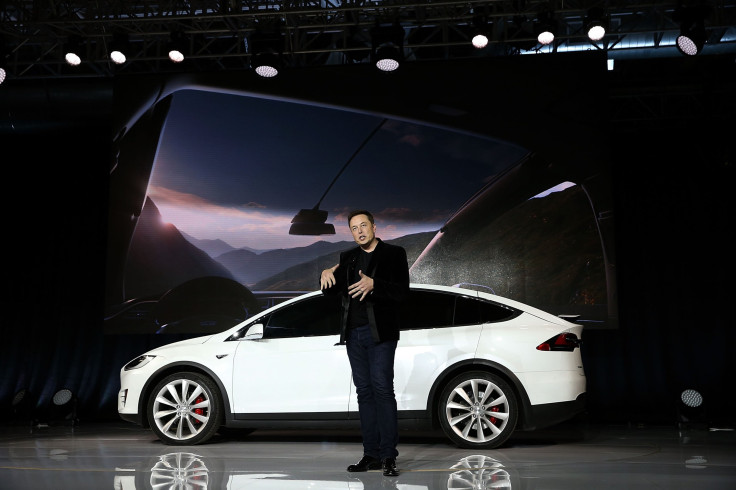Tesla Earnings Preview: Elon Musk Has A Lot Of Explaining To Do

Elon Musk's hubris has come back to bite him -- and Tesla (NASDAQ:TSLA) shareholders -- yet again.
Less than three months ago, Musk devoted a substantial part of Tesla's Q4 earnings call to talk about plans for massive automation of the vehicle manufacturing process. (This plan flew in the face of decades of industry experience and management theory.) Musk even said that Tesla's factory and production process, rather than its brand or vehicle designs, would be its long-term competitive advantage.
This article originally appeared in the Motley Fool.
It didn't take long for reality to set in. Tesla missed its production target again in Q1 -- partly due to the questionable decision to introduce so much automation. Furthermore, the company's plan to get production back on track by the end of this quarter could easily backfire -- with unfortunate consequences for Tesla.
A disappointing quarter
Two years ago, Tesla began taking reservations for the Model 3 sedan -- its most affordable vehicle yet. It quickly amassed hundreds of thousands of reservations. For the past year, Tesla's main objective has been to smoothly launch and ramp up production of the Model 3.
In the fourth quarter, Tesla delivered just 1,550 Model 3s. However, by the beginning of January, Model 3 production had reached a rate equivalent to more than 1,000 vehicles per week. Furthermore, in early February, management predicted that output would reach 2,500 units per week by the end of March.
Tesla fell short of that target. In the seven-day period ending on April 2, Tesla produced 2,020 Model 3s. More importantly, it built only 9,766 Model 3 vehicles during the entire quarter -- an average of 751 per week.
This makes it clear that the production pace for the last few days of the fourth quarter was just a gimmick -- as was the production rate at the end of March. Rather than smoothly ramping up production, Tesla has focused on maximizing output in the last week of each quarter in order to show off for investors. Meanwhile, its sustainable production rate has lagged far behind.
Elon Musk is asking for more trouble
In an interview earlier this month, Musk acknowledged that overreliance on robots rather than trained workers was a major cause of Tesla's recent production shortfalls. This casts doubt on the company's ability to meet its previous output goals, as those relied on increasing automation.
Additionally, Musk continues to pursue artificial production goals for the last week of each quarter rather than maximizing overall output. He recently set a goal of achieving a production rate equivalent to 6,000 vehicles per week (via Electrek) across Tesla's full Model 3 production apparatus and supply chain by June 30. The idea is to provide a margin of error so that Tesla can ensure that it hits its official target of building 5,000 Model 3s per week by the end of June.
Musk acknowledged that it would take several additional months for Tesla to be able to churn out 6,000 Model 3s per week on a sustainable basis. However, even that estimate might be too optimistic.
It's one thing to get a part of the production system moving at a particular speed for a day or a week. This can potentially be accomplished by adding overtime (or extra staff) and stockpiling parts or raw materials. The result is that extra production in the day or week being measured comes at the expense of output during the rest of the quarter. It's far more difficult to get the entire company and its supply chain to raise production in a coordinated, sustainable fashion.
Yes, it really matters
Some investors may believe that it doesn't matter whether Tesla achieves a sustainable Model 3 production rate of 5,000 vehicles per week in three months or six months.
However, Tesla ended 2017 with just $5.4 billion of liquidity. It is likely to burn through billions of dollars of cash this year, and the slower Model 3 production ramps up, the worse that cash burn will be. This could potentially force the company to issue more stock or debt on unfavorable terms.
Tesla's production woes will also interfere with its ability to reduce the cost to build each Model 3. That could force it to further delay selling the $35,000 base model, which price-conscious buyers have been waiting for. By the time the $35,000 version becomes widely available, the $7,500 U.S. federal tax credit for Tesla purchases will probably have started to phase out. As a result, some of these price-conscious consumers might never end up buying a Model 3.
Thus, Elon Musk needs to show during the upcoming Tesla earnings call that he is learning from his mistakes. To maintain investors' trust, it will be important for him to explain clearly how Tesla will reach and sustain its Model 3 production targets -- all while dramatically reducing costs.
Adam Levine-Weinberg has no position in any of the stocks mentioned. The Motley Fool owns shares of and recommends Tesla. The Motley Fool has a disclosure policy.





















